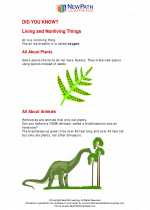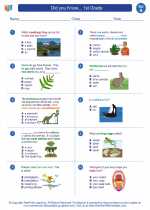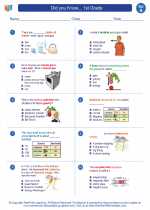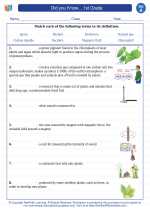Desert
A desert is a landscape or region that receives very little precipitation, typically less than 250 millimeters (10 inches) of rain per year. Deserts can be found on every continent and cover about one-fifth of the Earth's land surface. They are often characterized by extreme temperatures, with very hot days and cold nights, as well as sparse vegetation and dry, sandy soil.
Types of Deserts
There are four main types of deserts:
- Hot and Dry Deserts: These deserts, like the Sahara in Africa and the Mojave in the United States, are characterized by high temperatures during the day and low temperatures at night.
- Cold Deserts: These deserts, such as the Gobi Desert in Asia and the Great Basin Desert in the United States, experience cold winters and moderate summers.
- Coastal Deserts: Located along the coastlines, these deserts, like the Atacama Desert in South America and the Namib Desert in Africa, are influenced by cold ocean currents and experience very little rainfall.
- Semiarid Deserts: These deserts, such as the Sonoran Desert in the United States and the Thar Desert in India, receive slightly more rainfall than other types of deserts but still have limited vegetation.
Adaptations of Desert Plants and Animals
Plants and animals that inhabit deserts have developed special adaptations to survive in the harsh desert environment:
- Plants: Many desert plants have deep root systems to access underground water, thick waxy coatings to reduce water loss, and mechanisms for storing water, such as succulent stems and leaves.
- Animals: Desert animals have adapted to conserve water and regulate their body temperatures. Some have specialized kidney functions to minimize water loss, while others are nocturnal to avoid the heat of the day.
Human Impacts on Deserts
Human activities, such as agriculture, urbanization, and tourism, can have significant impacts on desert ecosystems. Overgrazing by livestock, deforestation, and groundwater depletion are among the threats to desert environments. Conservation efforts, sustainable land management, and responsible tourism practices are important for preserving the fragile desert ecosystems.
Study Guide
- What are the main characteristics of a desert landscape?
- List and describe the four main types of deserts.
- How do desert plants and animals adapt to survive in the harsh desert environment?
- What are some human impacts on desert ecosystems, and how can these impacts be mitigated?
◂Science Worksheets and Study Guides First Grade. Did you Know... 1st Grade

 Worksheet/Answer key
Worksheet/Answer key
 Worksheet/Answer key
Worksheet/Answer key
 Worksheet/Answer key
Worksheet/Answer key
 Vocabulary/Answer key
Vocabulary/Answer key
 Vocabulary/Answer key
Vocabulary/Answer key
